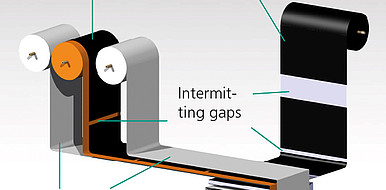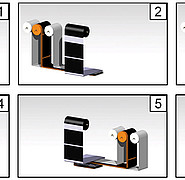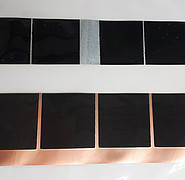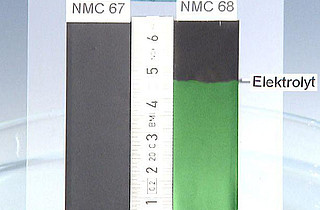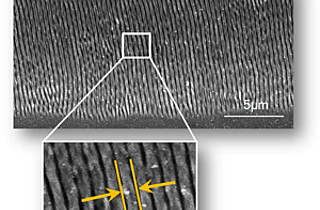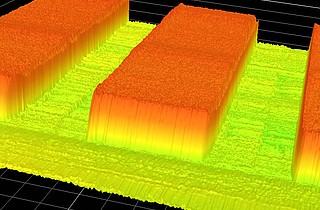Zigzagging to the cell stack
Proponents of electromobility pin their hopes on efficient energy storage devices such as lithium-ion accumulators. However, a breakthrough would above all require reduced manufacturing costs. They are a major cost-pusher since automation of producing cells meeting high quality demands, using sensitive materials and based on a high level of necessary pulsing has not yet reached maturity.
State of the art
The central processing step in cell manufacturing (assembling) is stacking: putting together electrodes (anode, cathode) and separators to form a stack of cells. Frequently, sheet stacking, i.e. the discontinuous stacking of individual layers, is applied. The form-cut materials are laid sheet by sheet one over the other, which creates a high energy density (energy storage capacity per unit weight). At the same time, however, this entails a high manufacturing effort. Form-cutting the material bears the danger of burr formation along the edges of the electrode and particulate contamination, which raises the risk of short-circuiting.
Technology
Scientists at KIT’s wbk Institute for Production Technology have developed a new stacking approach in which four material webs are folded one on top of the other in zigzag fashion. Using electrode webs coated intermittently and incorporating coating gaps prevents active material from bursting off the folded edges. In addition, these areas are later on used as cell arrestors. The anode is coated on both sides and is enclosed by two separator webs. The cathode, coated on one side only, is positioned at a ninety-degree angle to the anode. For the stacking process, the three-layer material web is laid first, and the cathode web is then coated and directly folded back, so that it forms a double layer with the coating on the outside. The three layers are then folded onto this. The process is continuously repeated until the desired stack height is reached, with the number of layers depending on the desired electrical characteristic values of the finished cell.
Advantages
On the one hand, the automated process enables the manufacture of cells with a high density, and on the other it ensures high process stability and pulsing. Finally, the stack of cells is contacted at the arrestors, packaged, vacuumed and filled with electrolyte.
Options for companies
An initial prototypical demonstrator of the process has been implemented at the Institute. KIT is looking for partners to advance and apply the process.
Your contact person for this offer

Innovation Manager Energy Karlsruhe Institute of Technology (KIT)
Innovation and Relations Management (IRM) Phone: +49 721 608-25335
Email: pelisson-schecker@kit.edu

